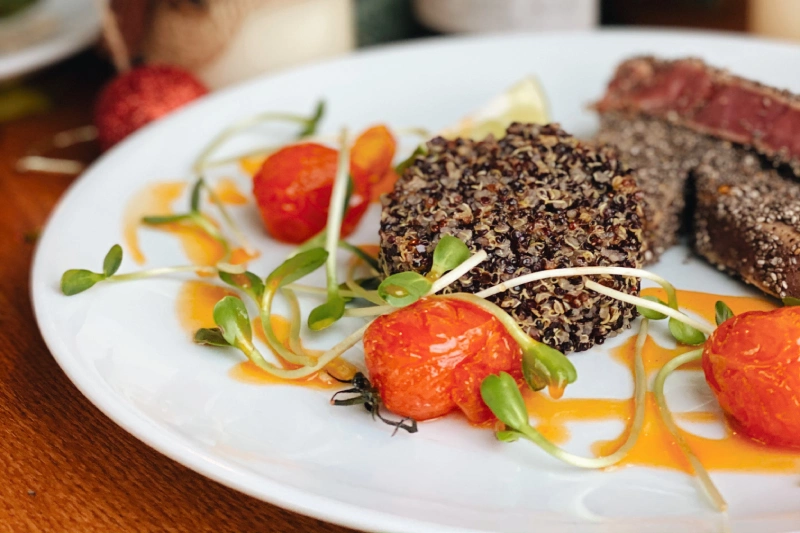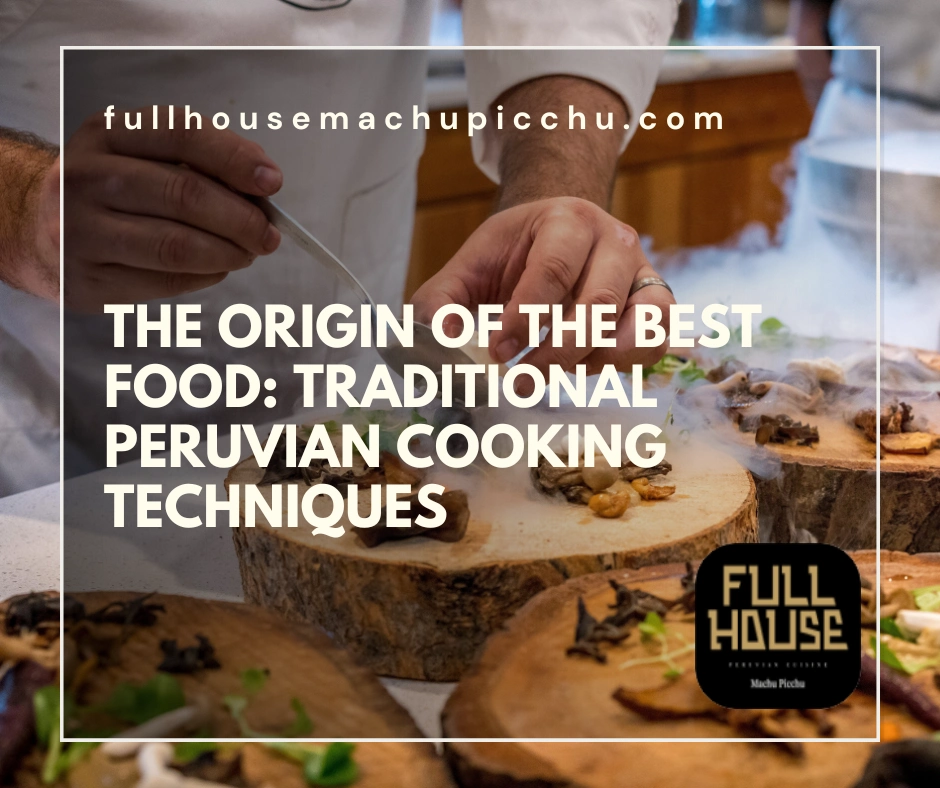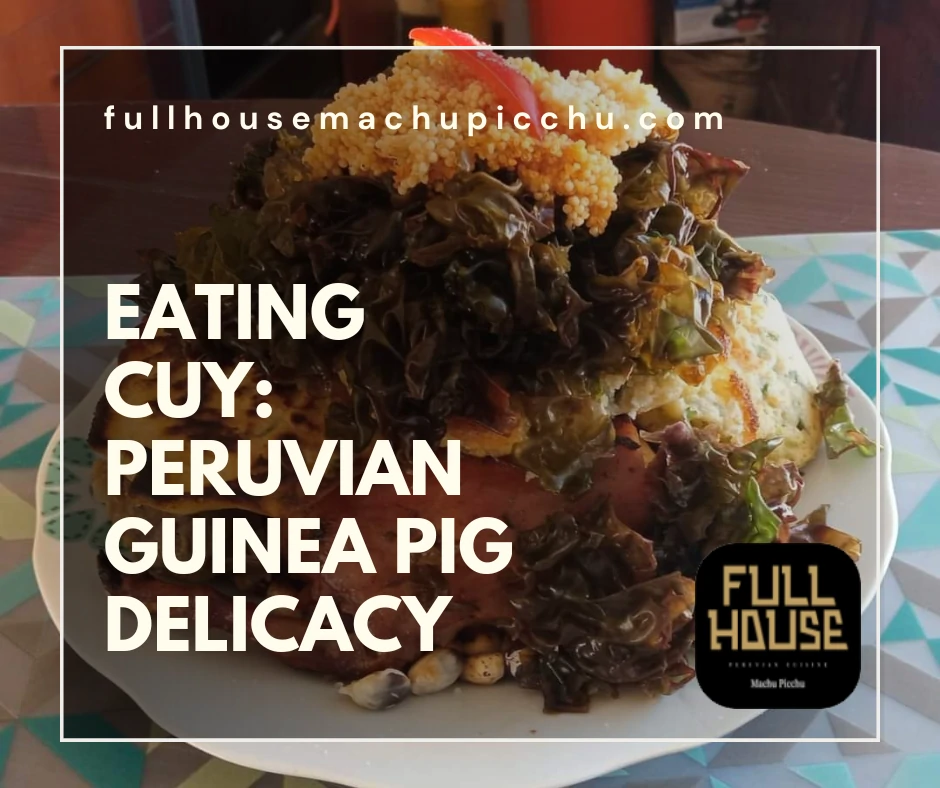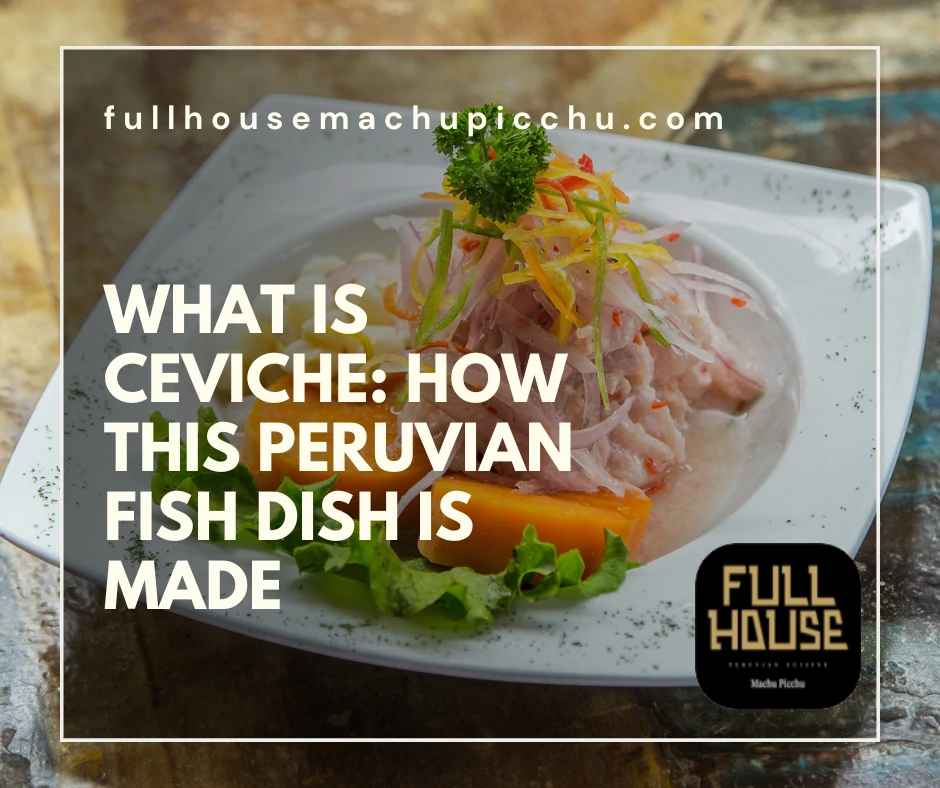Peru is a place of flavor and tradition. The Peruvian cooking techniques are a legacy from generations ago. In this post we will explore some of them.
Peruvian cuisine is the result of Peru’s past. It blends indigenous practices with Spanish, African, and Asian influences. This fusion creates unique and irresistible flavors.
This blog post is your guide to some of the techniques behind the most popular Peruvian dishes. Join us as we delve into the origin of many special flavors. An offering you can eventually taste with us, if you want.
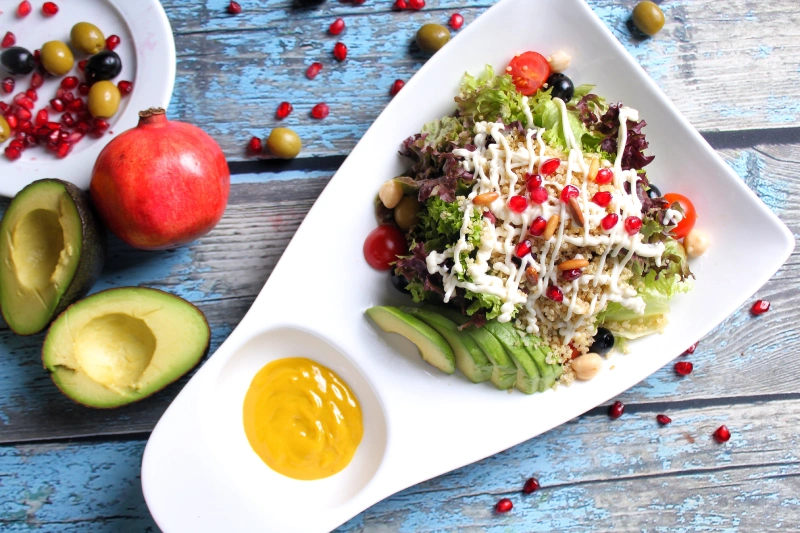
Unlocking the Secrets of Ceviche: A Taste of Peru’s Coastline
Ceviche stands as a testament to the rich tapestry of Peruvian cooking techniques. This dish, simple in its essence, marries the freshness of the sea with the tradness of lime juice. Served cold, fresh and spicy.
At the heart of this dish lies raw fish, cured in the acidity of lime juice. This technique, a cornerstone of Peruvian cooking, transforms the fish into a tender delicacy. Alongside, red onion, chili pepper, and sweet potato add layers of flavor and texture.
Peruvian ingredients like ají limo bring a unique heat and color to ceviche. Some innovations opt for using Rocoto or ají amarillo. Chili peppers are integral to many Peruvian dishes. All Peruvian food is well spiced.
The inclusion of sweet potato, a nod to the country’s diverse agriculture, balances the dish with its sweetness. The toasted corn adds texture.
The Influence of Global Flavors
The history of ceviche is a tale of cultural fusion. Chinese and Japanese immigrants introduced the use of raw fish into the Peruvian diet. This blend of Peruvian and Asian techniques has made ceviche one of the most popular dishes in Latin America.
In every Peruvian restaurant, ceviche takes center stage. It showcases the skill of Peruvian chefs in combining simple ingredients to create complex flavors. Ceviche is the base for all sea food culture in Peru.
A Culinary Journey Through Peru
Ceviche is just the beginning of the journey into Peruvian cooking techniques. Lomo saltado, another popular dish, reflects the influence of Chinese immigrants. It combines stir-fried beef, vegetables, and fries, all flavored with soy sauce.
A popular base for soups include ginger and garlic. Most stew-like plates come with a portion of rice. And even the use of MSG is a clear indication of the Asian influence in Peruvian cooking techniques.
Embracing Tradition and Innovation
The future of Peruvian cuisine looks bright, with chefs both in Peru and abroad pushing boundaries. They respect traditional techniques while experimenting with new methods.
This blend of tradition and innovation ensures that Peruvian cooking remains dynamic and exciting. Ceviche, with its simplicity and depth of flavor, continues to inspire chefs around the world.
It serves as a reminder of the power of Peruvian cooking techniques to transform simple ingredients into extraordinary dishes.

Embracing the Earth: The Time-Honored Ritual of Pachamanca
Pachamanca stands as a testament to the rich heritage of Peruvian cooking techniques. This ancient method, deeply rooted in the Andes, uses earth’s warmth to cook in a unique way.
At the heart of this ritual lies a variety of Peruvian ingredients. Meats, sweet potatoes, broad beans are the ingredients. They are layered with an herb base condiment. They are then cooked under the earth, covered by hot stones.
This technique infuses it with a unique, smoky earthy flavor. Pachamanca is more than a cooking method. The process involves everyone.
A Journey Through Flavors and Techniques
Central to pachamanca are the Peruvian cooking techniques that came from generations ago. These methods showcase the ingenuity of ancient peruvians. Their cooking techniques involved the outside.
Peruvian dishes like pachamanca highlight the country’s agricultural diversity. The preparation of pachamanca is a day-long affair, reflecting the dedication to Peruvian cooking.
A lot of processes in Peruvian cooking are meticulous. They require communal cooperation. In some cases they require specialists for just one part of the plate.
The Andean Influence on Peruvian Cooking
Peruvian cooking techniques, such as those used in pachamanca, have been influenced by cultures of Andean origin. The concept of cooking through the heat trapped in the ground is ancient.
A traditional practice similar to pachamanca, is the Watia from Cusco. Watia is a way of cooking potatoes under the rest of a burned earth oven. You can find that practice in Cusco during June.
The Ingredients That Define Peruvian Cuisine
The ingredients used in pachamanca are a reflection of Peru’s rich biodiversity. From the highlands to the coast, Peru boasts a variety of ingredients that are central to its cuisine.
Peruvian restaurants around the world strive to replicate the authentic flavors of dishes like pachamanca. They use traditional Peruvian cooking techniques to bring a taste of Peru to diners everywhere.
Preserving Tradition While Embracing Innovation
As Peruvian cuisine continues to gain international recognition, there’s a growing emphasis on preserving traditional cooking techniques. Pachamanca is a prime example of this. It’s a method that has endured for centuries.
Pachamancha as a word, translates to “earth’s pot” showing how essential the earth is. The flavor will not be the same without preparing it underground.
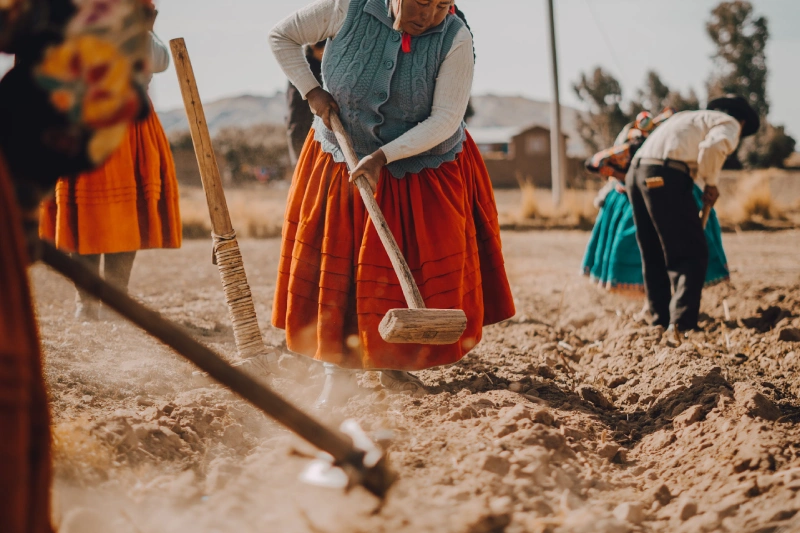
From Ancient Grains to Gourmet Dishes: The Transformation of Quinoa
Quinoa has become a global superfood. This journey reflects the evolution of Peruvian cooking techniques. It showcases how an ancient grain can transform into gourmet dishes.
Peruvian cooking techniques have always emphasized the versatility of local ingredients. Quinoa is no exception. This grain is part of a variety of dishes, from traditional to modern.
A Staple Reimagined
In Peru, quinoa is more than just a side dish. It’s a key ingredient in soups, stews, and even desserts. Peruvian cooking techniques have elevated quinoa, showcasing its potential in various culinary creations.
The base for Quinoa preparations lies in boiling it at the perfect point. So every grain retains its shape but is soft. You need to wash thoroughly the Quinoa before boiling.
Chicha (fermented sweet beverage) made with quinoa is refreshing. Combine quinoa with apples and cinnamon for breakfast. And those are just some of the localy popular quinoa dishes
Quinoa has also made its way into international cuisine.It became popular for its nutritional properties. Now, Quinoa has become a symbol of Peruvian cooking’s global influence.
Quinoa in the Modern Kitchen
Today, quinoa is a staple in health-conscious diets. Its high protein content and gluten-free nature make it a valuable ingredient. This shift from ancient grain to modern superfood is remarkable.
Peruvian cooking techniques have played a crucial role in this transformation. Chefs have experimented with quinoa, creating dishes that appeal to contemporary palates.
Quinoa’s transformation is a story of innovation. It highlights how traditional ingredients can find a place in modern kitchens.
Preserving Tradition, Embracing Change
As quinoa’s popularity continues to rise, the challenge is to preserve its traditional roots. Peruvian cooking techniques offer a way to balance tradition with innovation. They allow chefs to explore new culinary territories while honoring the heritage.
The future of quinoa in Peruvian cuisine looks promising. It holds the potential for even more creative culinary expressions. As chefs continue to experiment, quinoa will undoubtedly remain at the forefront of Peruvian cooking.
